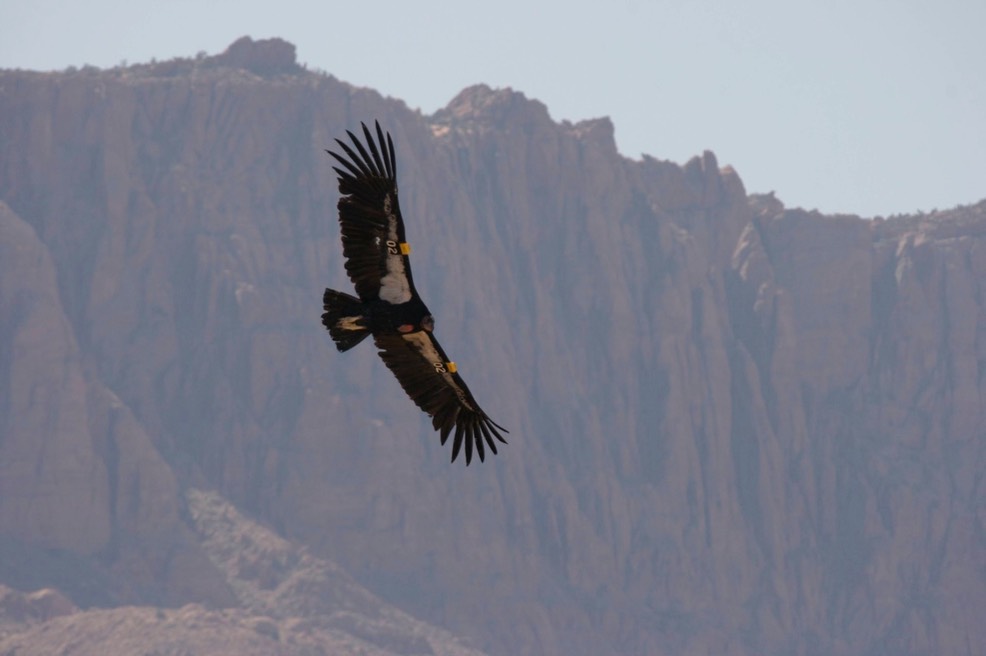
I have made many visits to Arizona over the years, seeing just about every corner of the state - but certainly not all of the sites.
Volumes 5 & 6 of Birding the Western U.S. and Canada include video of the following species from Arizona (Birding The West Volume 5 Duration: 46:16 - Volume 6 Duration: 1:06:51; Tricolord Blackbird, American Coot, Neotropic Cormorant, Bronzed Cowbird, Sandhill Crane, Mourning Dove, White-winged Dove, House Finch, Northern (Red-shafted) Flicker, Ash-throated Flycatcher, Vermillion Flycatcher, Lesser Goldfinch, Canada Goose, Ross’ Goose, Snow Goose, Great-tailed Grackle, Common Ground-Dove, Black-headed Grosbeak, Blue Grosbeak, Sage Grouse, Gray Hawk, Red-tailed Hawk, Green Heron, Black-chinned Hummingbird, Blue-throated Hummingbird, Magnificent (Rivoli’s) Hummingbird, Violet-crowned Hummingbird, Mexican Jay, Stellar’s Jay, Yellow-eyed Junco, Killdeer, Cassin’s Kingbird, Western Kingbird, Horned Lark, Northern Mockingbird, Black-crowned Night-Heron, White-breasted Nuthatch, Hooded Oriole, Scott’s Oriole, Great Horned Owl, Black Phoebe, Gambel’s Quail, Painted Redstart, Whiskered Screech-Owl, Northern Shoveler, Sora, Black-throated Sparrow, Chipping Sparrow, Song Sparrow, Northern Rough-winged Swallow, Summer Tanager, Western Tanager, Abert’s Towhee, Canyon Towhee, Curve-billed Thrasher, Hermit Thrush, Bridled Titmouse, Elegant Trogon, Plumbeous Vireo, Black-throated Gray Warbler, Red-faced Warbler, Acorn Woodpecker, Gila Woodpecker, Cactus Wren, Coati, Desert Cottontail, Whitetail Deer, Roundtail Ground Squirrel, Pronghorn, Yarrow’s Spiny Lizard, Sonoran Gopher Snake, Monarch, Red Satyr, and Pipevine Swallowtail.
There is also a video portfolio of bird species, which includes material from Arizona, The Birds of the United States and Canada. The Birds of Arizona, USA photo gallery has images of many Arizona “special species”.
General Interest Photographs from Arizona, published on this site, are found in the Arizona Photos gallery. The Arizona Flora and Arizona Fauna photo galleries wrap up the photo offerings from Arizona.
The Ancient Peoples of the World website has an extensive photograph gallery of the work/life of the early people of Arizona, including material from the; Painted Rock Petroglyph Site, the Arizona State Museum, Walnut Canyon National Monument, Montezuma Castle National Monument, Petrified Forest National Park, Casa Grande Ruins National Monument, and Wupatkia National Mounment.
MADERA & GARDNER CANYONS
There are times when I forget what the rest of the world is doing. The first part of June 2014 was such a time. I chose that weekend, and Easter weekend at that, to go birding south of Tucson, Arizona.
My first stop was Madera Canyon, where I found every possible parking spot taken, every picnic table encircled by large groups of people, every campground spot and room occupied, and the road only marginally drivable because of the mass of people. For a person who hates urban birding, this was hell. For those of you who want to argue about my definition of urban birding feel free, but I consider any place with such a mass of people urban. Bailing out I headed across the Santa Rita Mountains to Gardner Canyon where I managed to find a camping spot with 75 feet of distance from someone else. It too was a zoo, just a bit different with ATVs and dune buggies taking the place of picnic tables. People driving up and down the road at 3 a.m. with blasting radios added to the urban feeling. Late in the afternoon of Sunday, I tried Madera Canyon again and found the same picnicking zoo that I found on Saturday.
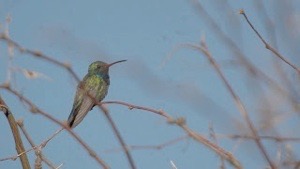
PATAGONIA-SONOITA CREEK PRESERVE
From Madera Canyon, I headed to Patagonia and spent time videotaping at the Patagonia-Sonoita Creek Preserve which is owned and operated by the Nature Conservancy. The Broad-billed Hummingbird pictured to the right joined a host of birds which included (but was not limited to) Gray Hawk, Abert's Towhee, White-breasted Nuthatch, Black-chinned Hummingbird, Anna's Hummingbird, Rufous Hummingbird, Cassin's Kingbird, Canyon Towhee, Northern Beardless Tyrannulet, Acorn Woodpecker, Gila Woodpecker.... The list was extensive but nothing particularly unusual for the site. But it is a spectacular site and a visitor from anywhere else in North America would find the list quite satisfying.
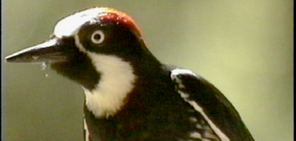
ACORN WOODPECKERS
It is possible to see Acorn Woodpeckers in Oregon, in fact, there is a reliable spot within 30 miles from where I lived in Portland. It is a species which has always required some special effort on my part, however. It is not a “trash bird”.
I remember a summer’s day of the past, however, when no special effort was required to see the Acorn Woodpecker. On that day I was in Arizona (USA). I had just pulled into a campground, it was hot, I had flown down from Oregon, picked up a car, and driven miles and miles - I was tired. I slowly opened the door of the car, there in a tree only five feet away an Acorn Woodpecker was working diligently at food (photo right).
Over the next few days I came to accept them as very common birds and payed them very little heed as I worked to film other species.
ORGAN PIPE NATIONAL MONUMENT
During December 2006 we traveled from Portland, Oregon to Tucson, Arizona. Along the way we did, however, manage to work in a quick side trip to Organ Pipe National Park which is in the southwestern part of the state of Arizona, bordering Sonora, Mexico on the south.
I have always been impressed with the mixture of stone, sun, and cactus in this region -- an incredible composition.
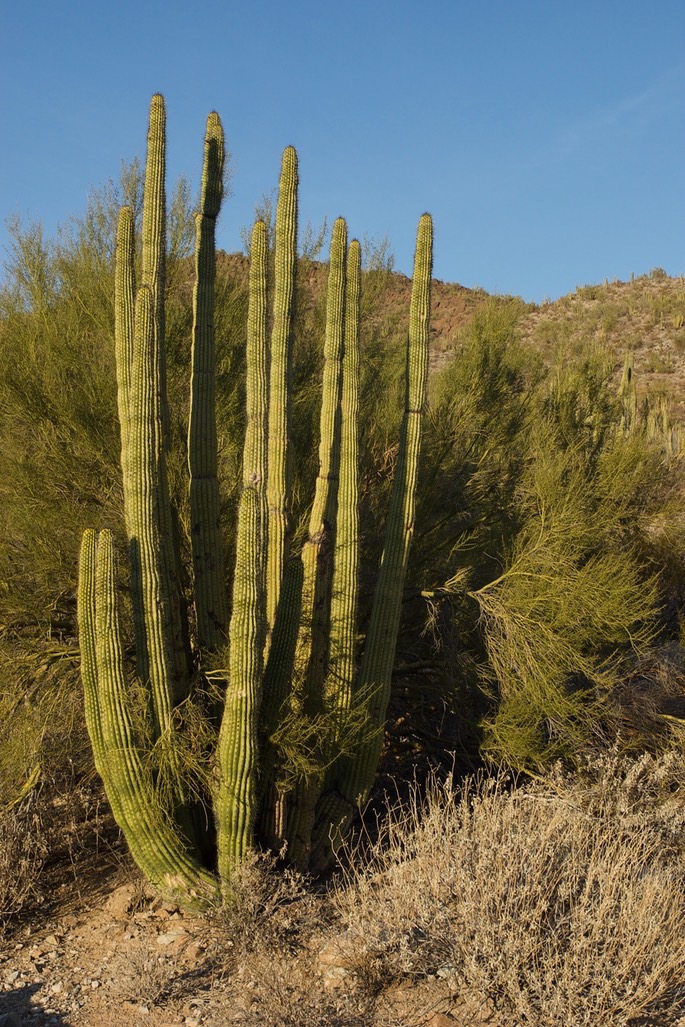
Stenocereus thurberi, Organpipe Cactus, Organpipe National Monument, Arizona
As we headed north from the Visitor Center we were stopped by the US Border Patrol who wanted to know from whence we had come - my response of “the Visitor Center” may not have been supportive of the efforts of these brave men and women who are protecting the peoples of the great Orange County, California enclave.
SAN PEDRO RIVER
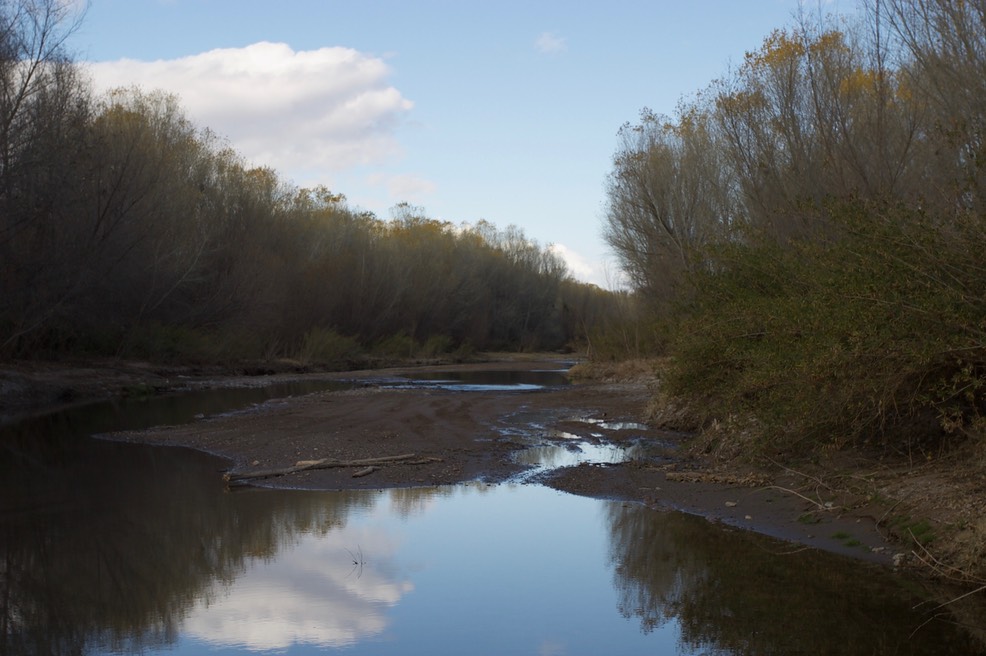
On December 17, 2006 we scouted future photograph and video locations. We crossed the Rincon mountains via Reddington Road, visited San Manuel and Mammoth, and looked at sites along the San Pedro River (photo above). The highways were paved or reasonable dirt roads. Along the San Pedro we found Beaver signs and a small beaver dam.
In this area we found Black Phoebe, Western Bluebird, Ruby-crowned Kinglet, Greater Roadrunner, and House Wren within fifty feet of the car. The river is quite small this time of year but during the summer rains in can turn into a raging mess.
From the San Pedro we traveled across the Tortilla Mountains, trying various side roads along the way. We stayed out of the washes but still saw some great countryside. Saguaro and various Cholla, prickly pear, and barrel cactus species dominated the landscape along with Palo Verde, Mesquite, and Brittlebrush. In this habitat we saw a lot of Northern (Red-shafted) Flicker, Black-throated Sparrow, Phainopepla, and Gambel’s Quail.
BIRDING TUCSON, ARIZONA
In December 2006 I visited Tucson and noted that I had been videotaping Greater Roadrunner, Gambel’s Quail, Canyon Towhee, Mourning Dove, Cactus Wren (below) and Black-throated Sparrow -- on a rest day following the drive down from Oregon.
In the early dawn a Coyote came to the back door, during the night their howls filled the dark landscape, I pulled the blanket up and contentedly fell back to sleep.
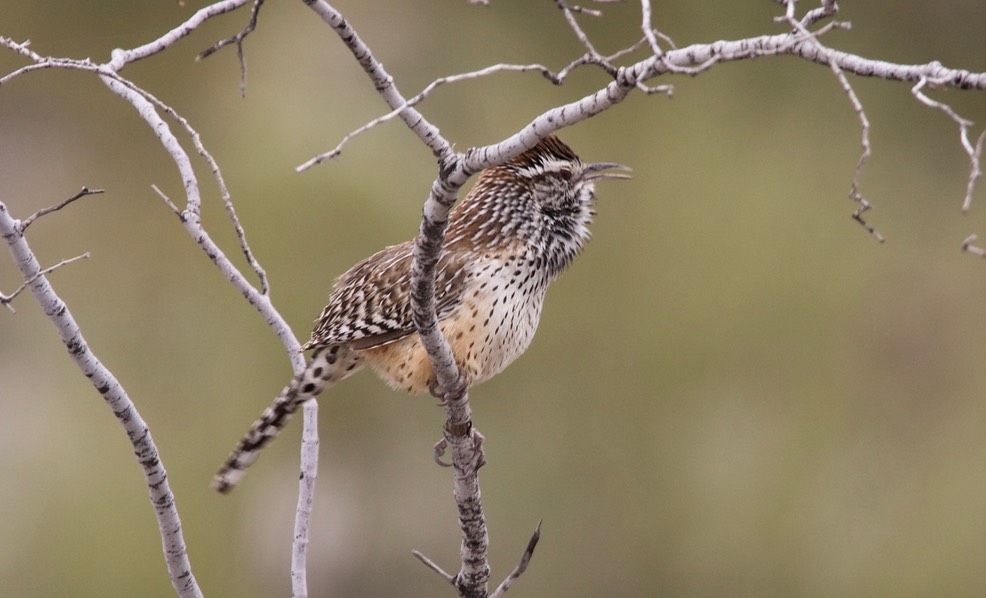
At that time I taped many of the common birds -- Gambel’s Quail, Cactus Wren, Mourning Dove, Canyon Towhee, Curve-billed Thrasher, Black-throated Sparrow, Phainopepla, and White-crowned Sparrow are the most common species at my home base. Some nice footage but mostly I was thinking of future efforts and getting an idea about the logistics of doing a prolonged shoot in the area.
Anna’s Hummingbird (above) from October 4, 2007 and Verdin below on February 18, 2008.
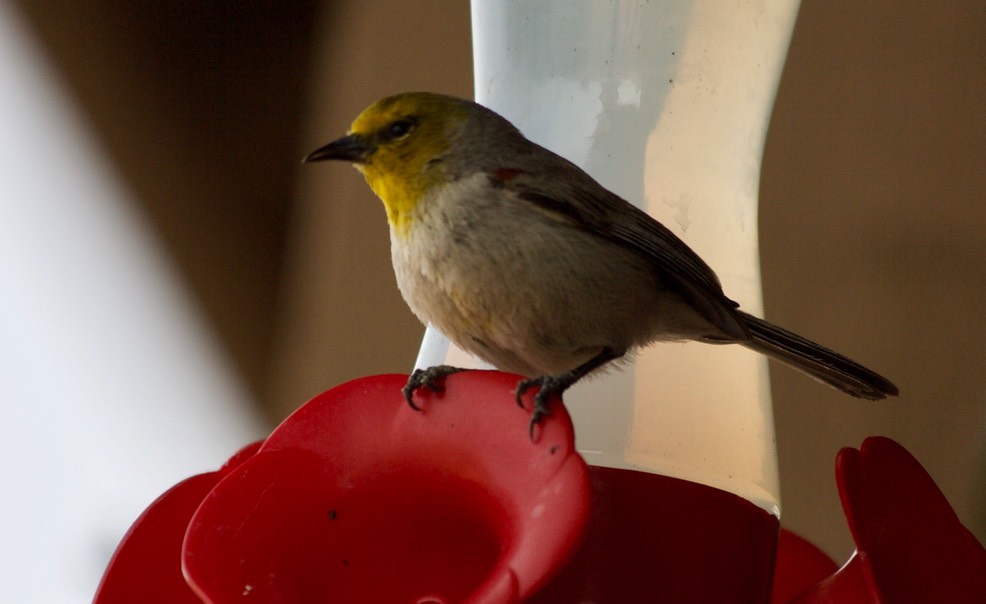
When we stay in Tucson we are lucky enough to live on the edge of the city, near Saguaro National Park. That means, among other things, that we get to rise to the sound of Gambel’s Quail (below) and Curve-billed Thrasher (above). The Thrasher is the sound of the desert, all day long (these photographs from February 2008).
CASA GRANDE RUINS
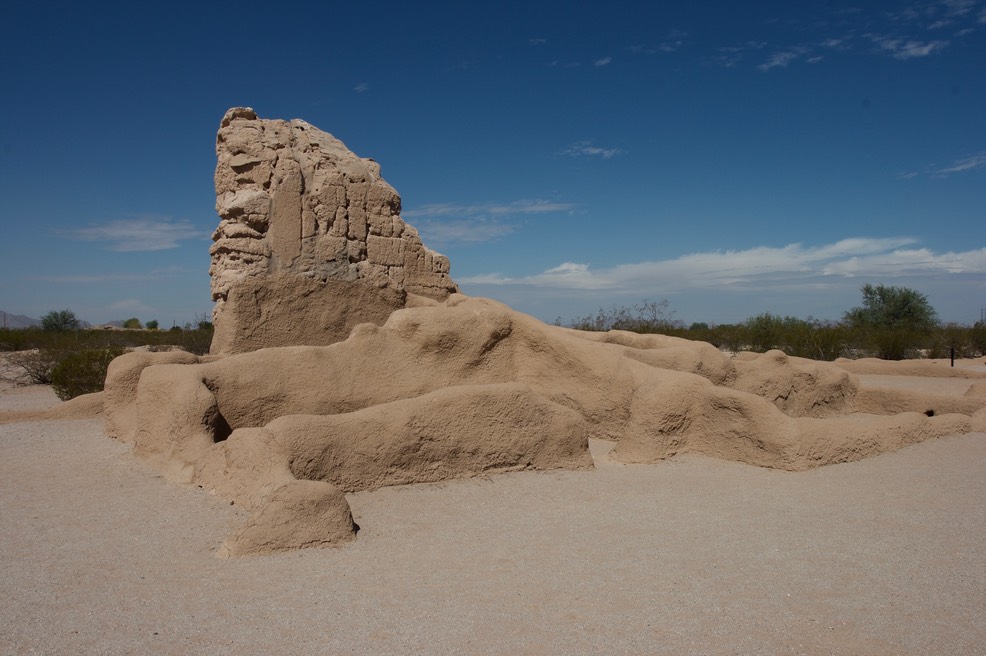
On October 2, 2007 Rebecca and I wound our way through the southern end of the Sierras, with some highway grades of 11 and 13%, driving late to reach Coolidge. We spent the next morning touring the Casa Grande Ruins, the photographs from here are not as exotic as some of the ancient sites - but impressive nonetheless. The Round-tailed Ground Squirrel was very cooperative at Casa Grande, even waiting for me to get a longer lens.
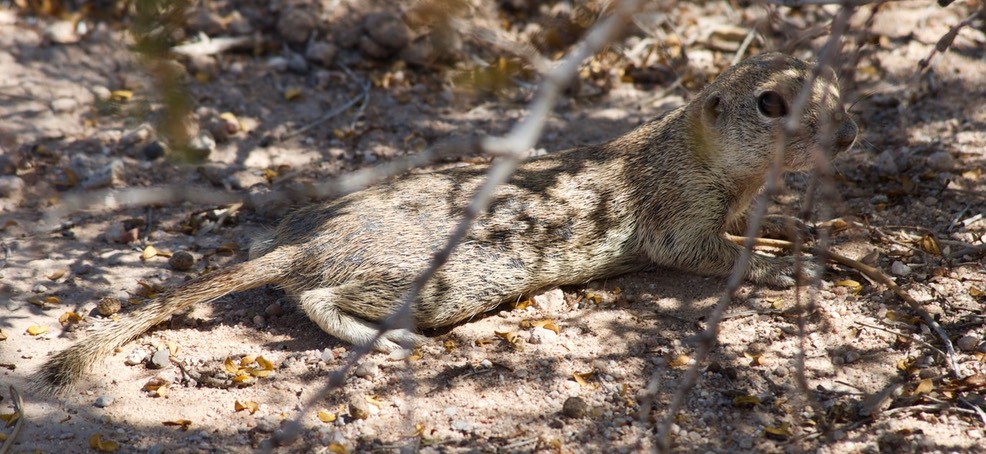
PLANES OF FAME AIR MUSEUM, VALLE, ARIZONA
I thought that I had gotten “Airplane Museums” out of my system. I was wrong. I picked the northern route through Arizona, in part, so I could stop at the Planes of Fame Air Museum in Valle (Arizona, USA). See the Air and Ground website for additional photographs from this site.
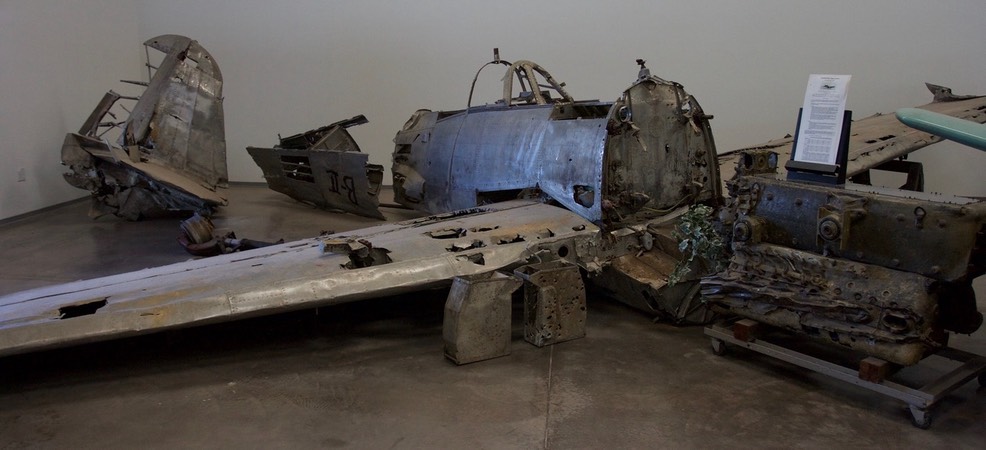
I was pleased with the visit, and added a new gallery to the site as a result. Behind all the fascination with the machinations of airplanes lies the understanding that the photo above shows how most of them end up (in this case, the remains of a Yokosuka DAY Suisei - Comet).
After visiting the Planes of Fame Air Museum I walked across the parking lot to visit the Valle Airport Terminal -- to see a collection of antique automobiles and light trucks which they had in the lobby. It was a very pleasant display with nice vehicles -- looking outside I could see about three inches of snow on the ground.

THE GRAND CANYON NATIONAL PARK
Looking back on some of my travels I wonder what the merits are of just passing through on the way to somewhere else. Such sideline efforts certainly make the traveling more enjoyable and probably a bit safer - I get tired if I drive 10 hours a day, for several days in a row. It also allows time for reconnoitering future sites to visit. AND, it can be very productive. On December 16, 2007 I stopped at the Grand Canyon and was rewarded with some great photographic opportunities including a nice study of Common Raven.
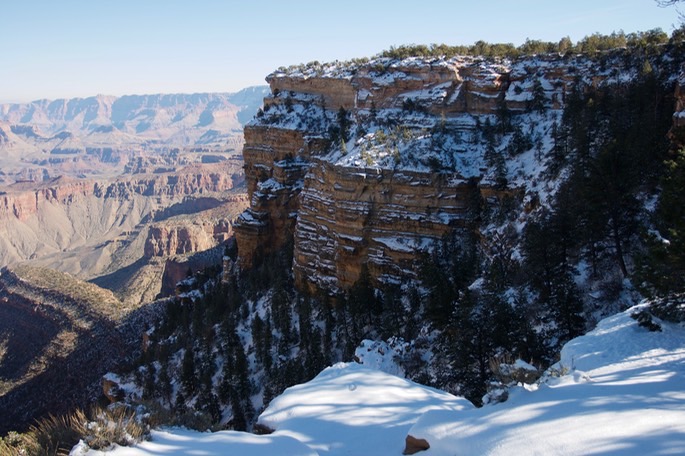
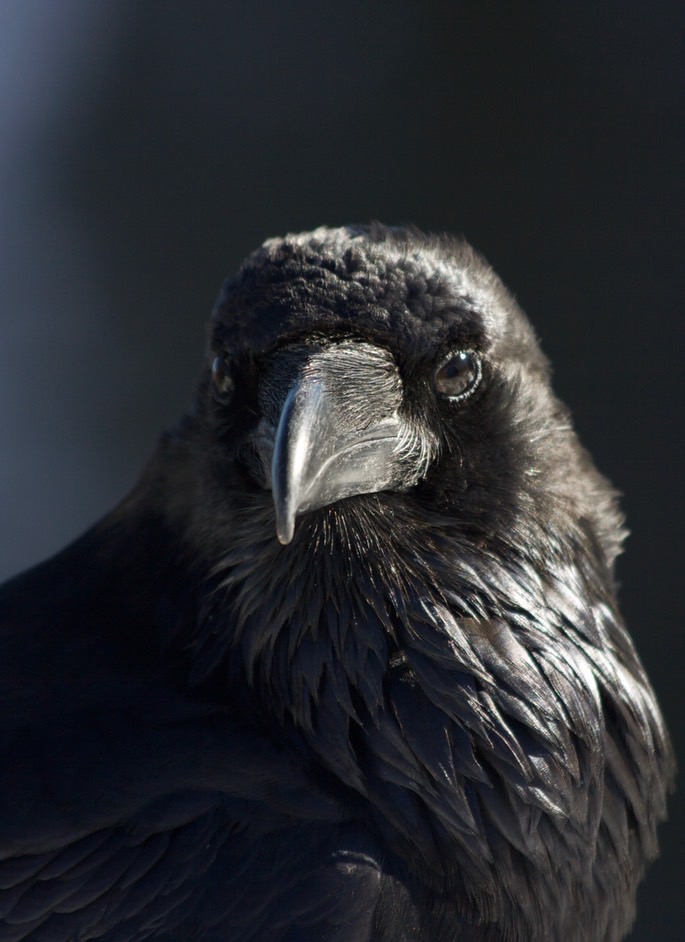
Common Raven, Grand Canyon National Park, Arizona, December 16, 2007
On this particular occasion I was able to study the Raven’s nictitating membrane. The membrane is a “third eyelid” which sweeps horizontally across the eye (from the inside edge of the eye to the outside edge - away from the bill). It is used to clean and moisturize the eye. The following two photographs were taken a second apart as the Raven posed for me on the South Rim.
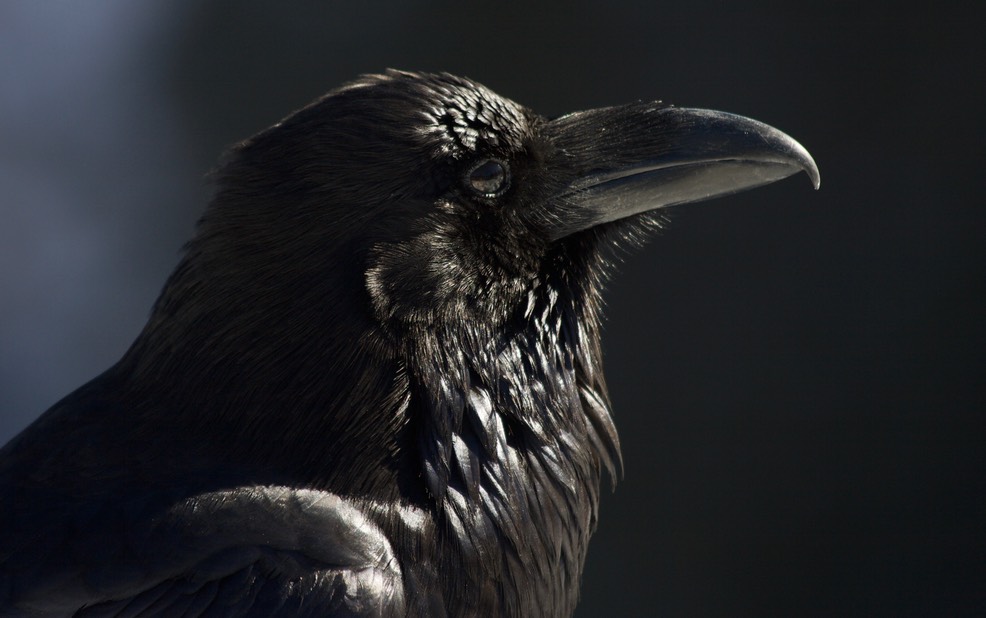
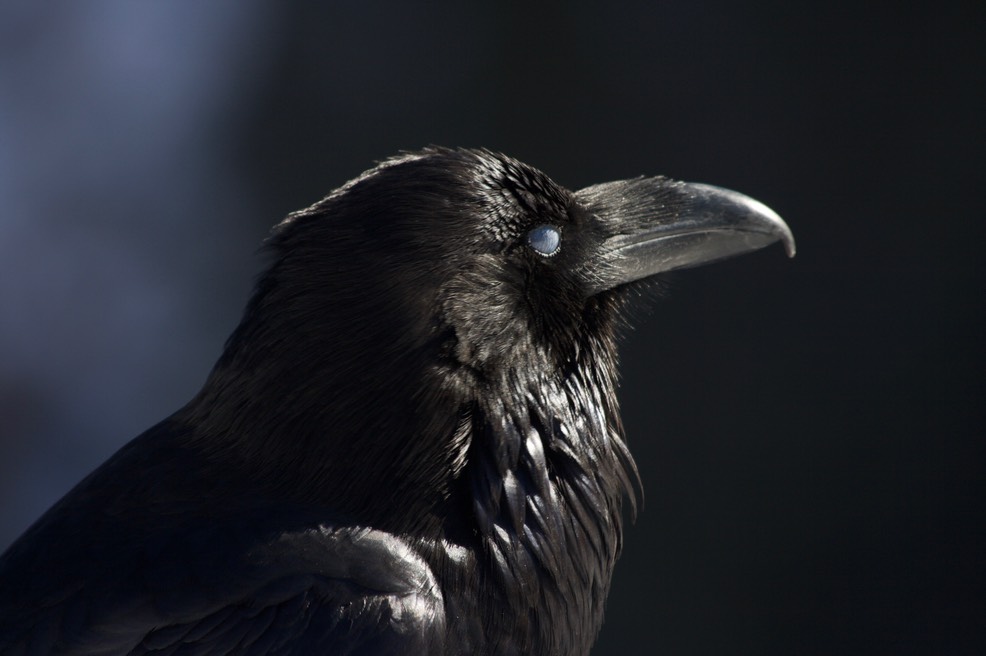
WUPATKI NATIONAL MONUMENT
On the 16th, my last side trip was to Wupatki National Monument. I wanted to take photos of ruins in the snow and was not disappointed by the opportunities at Wupatki. (One nice thing about winter -- there are fewer people out and about.) I was able to visit four major ruin (Pueblo) sites in my short visit. The photos are good but I am still searching for that quintessential photo of snow on rock. (Additional photographs from this site can be found at the Ancient Peoples website.)
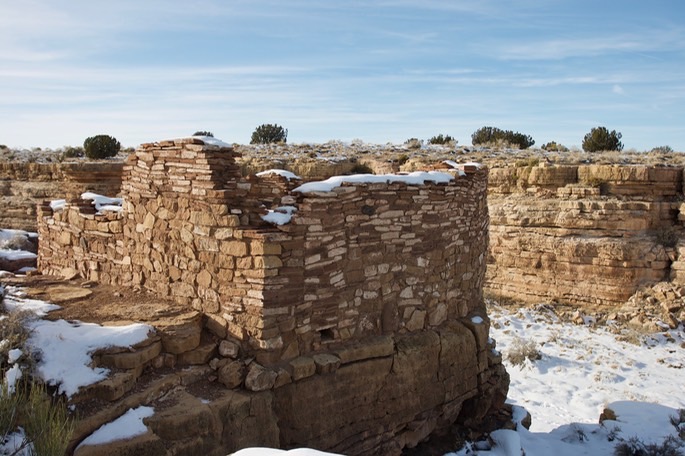
NAVAJO BRIDGE
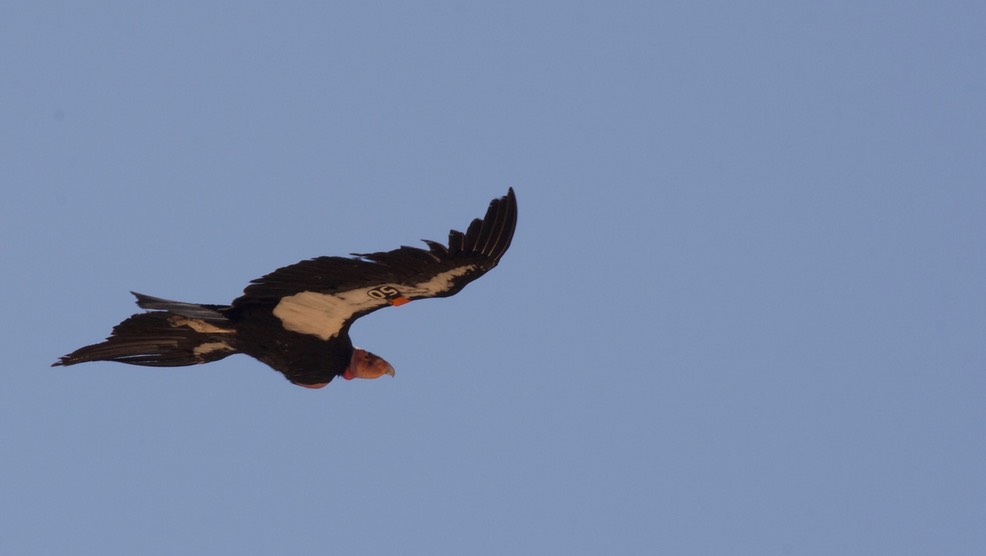
I generally stop at the Navajo Bridge crossing of the Colorado River (in northern Arizona, USA) at midday. On April 15, 2008, I hoped that I would be able to see one of the California Condors which have been released there as part of the captive breeding program (administered by the Peregrine Fund and others). I wandered over to the interpretive center and there above me, and not very far above me, were seven Condors. I watched for half an hour as they soared lazily above or flashed quickly along the cliffs, all of the birds I saw were tagged. Lots of photographs but no video.
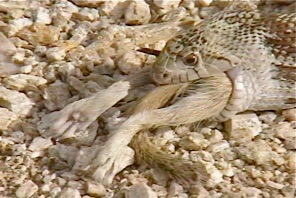
SONORAN GOPHER SNAKE
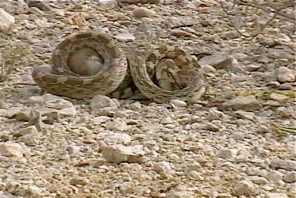
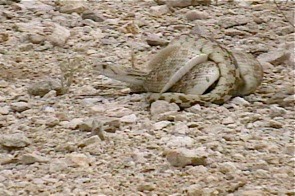
My son and I were videotaping in Saguaro National Park. While hiking along a trail we encountered a Roundtail Ground-Squirrel being killed and eaten by a Sonoran Gopher Snake.
It was a gruesome and fascinating event. I am a bit uncomfortable around snakes, to use a cliche, my skin was crawling.
The Gopher Snake first constricted the Ground-Squirrel and then swallowed it whole. The entire process took about twenty minutes.
During the editing of “Birding The West” Volume Three. I used footage of a Roundtail Ground-Squirrel shot the week before to create the drama of “a stalk” prior to the feast.
As my son watched we discussed how most of the natural history shows are edited -- with the lion tracking an antelope which was filmed the year before in a different country. I am afraid it ruined Natural History programming for years, for my son. But his healthy cynicism on the subject led to the excellent editing eye which he posses today.
WALNUT CANYON NATIONAL MONUMENT
Walnut Canyon National Monument is in northeastern Arizona and was a frequent stopping place during my trips between Oregon and Arizona/New Mexico. On April 15, 2008, for instance, I stopped at the Monument but found the trail was closed because of a rock slide.
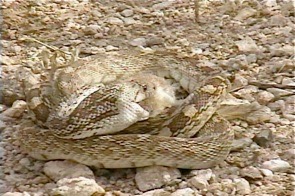
PETRIFIED FOREST NATIONAL PARK
Petrified Forest National Park is along Interstate-40 and thus a good place to stop on those long trips between Oregon and the southwest. On one such trip, on April 15, 2008, I stopped by Petrified Forest National Park in the late afternoon and looked at petrified logs and a pueblo site from ca. 700 AD. I took a short hike at Grey Mesa and took a number of photographs of the highly sculptured landscape -- dotted here and there by petrified logs.
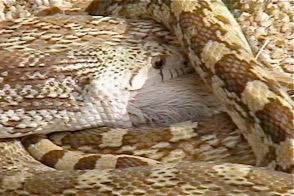
CANYON DE CHELLY NATIONAL MONUMENT
On April 30, 2008, I spent the morning taking photographs of Canyon de Chelly (Arizona, USA) -- from the north and south rims. I spent some time wondering if I ever wanted to spend the money to tour the canyon floor and left undecided. It is truly a beautiful canyon but there are many beautiful canyons in the southwest.
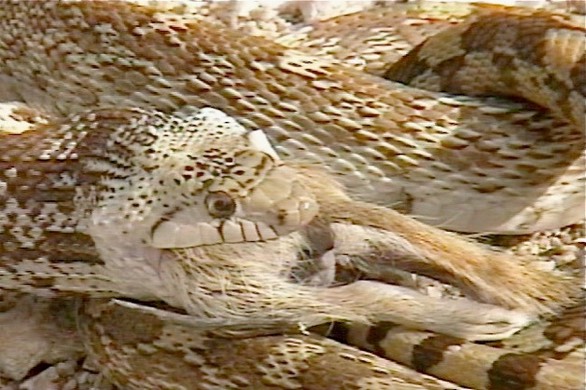
I met a man who made juniper berry necklaces and sells them along one of the trails that I took to the north rim. This was very interesting to me, we discussed how he went about gathering the berries and how he made the necklaces.
CHIRICAHUA MOUNTAINS
My wanderings in the Chiricahua Mountains of southeastern Arizona have been in the northern part of the range; the Chiricahua National Monument, Portal, Paradise, Rustle Park…. Or to put another way; Elegant Trogons, Yellow-eyed Juncos, Blue-throated Hummingbirds, and Coatimundi…
The following “road video” starts in the town of Portal on the east side of the Chiricahuas and heads toward the crest. In addition, to this road video, there are two others; Arizona - Chiricahua National Monument and Arizona - Chiricahua Transit.
The Chiricahuas can be a (long) day trip from our home in New Mexico but having a bit more time on the ground relative to driving time is always good. October is not prime birding time in the Chiricahuas and that is why, in part, that I wanted to go there in 2017. What does a slow time in the Chiricahuas actually mean?
Friday morning we had a leisurely start, had some pastry and coffee in Silver City (across the Black Range from us - about an hour and a half drive) and were at the American Museum of Natural History’s Southwestern Research Station in the Chiricahuas by lunch. Among other things, the Research Station has a great group of hummingbird feeders, benches for leisurely watching, and an accommodating attitude. We ate our sandwiches and watched hummingbirds until we tired of
Blue-throated Hummingbird (above) and Anna’s Hummingbird - both at the Research Center.
the activity and then headed up to the crest of the mountains to Rustler Park - for Yellow-eyed Juncos (photo below). Not many flowers were in bloom, although Deer Brush was represented by several blooming individuals.
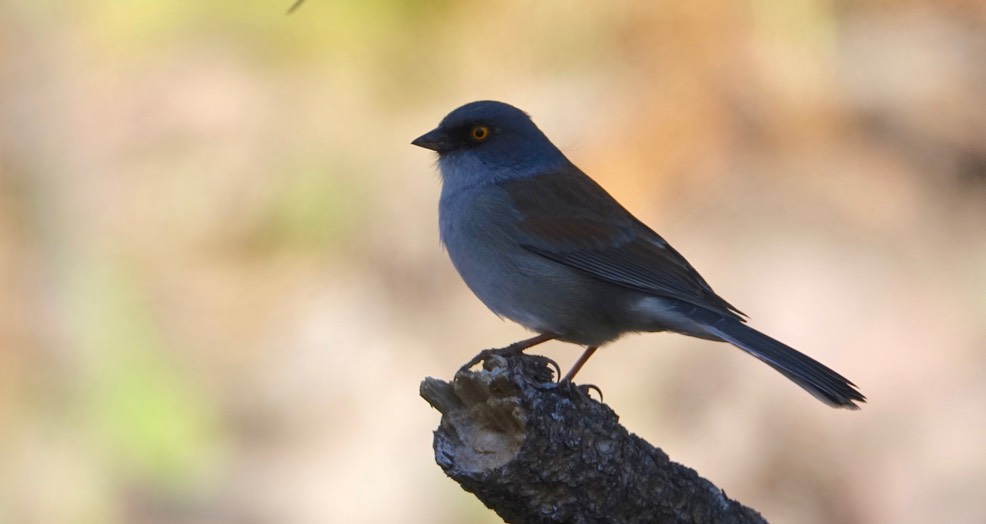
It was approaching dusk as we headed back down the mountain to our room in Rodeo, New Mexico. When we stay in Rodeo we stay at the Mountain Valley Lodge. Breakfast Saturday morning at the local cafe and we were off to walk the Basin Trail, doing a loop out of the Herb Martyr campground. The trail was good for Yarrow’s Spiny Lizard (see below) and Arizona Sister.
In the afternoon, we were at the Portal Cafe for Irish music. For several years, Irish Music Week has been held in Portal. A week long music camp with world-class instructors from throughout the United States ends with a concert by the instructors (photo below). A real treat.
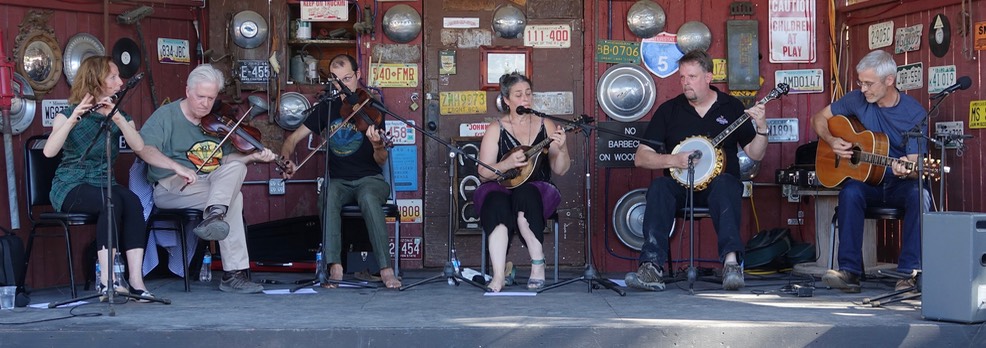
We ended the day at Willow Tank, just inside Arizona, west of the Stateline Road. “Tank” is a term used in the American Southwest (and in many former British colonies - Sri Lanka and India, for instance) for a stock pond or reservoir. Tanks are usually built by constructing dikes above ground level. The dikes are built of the mud/dirt excavated from the interior of the walled area. Vegetation has been allowed to grow within the tank, bird blinds have been erected, benches placed along the dike etc. (photo below). Making for a great migrant trap in the desert.
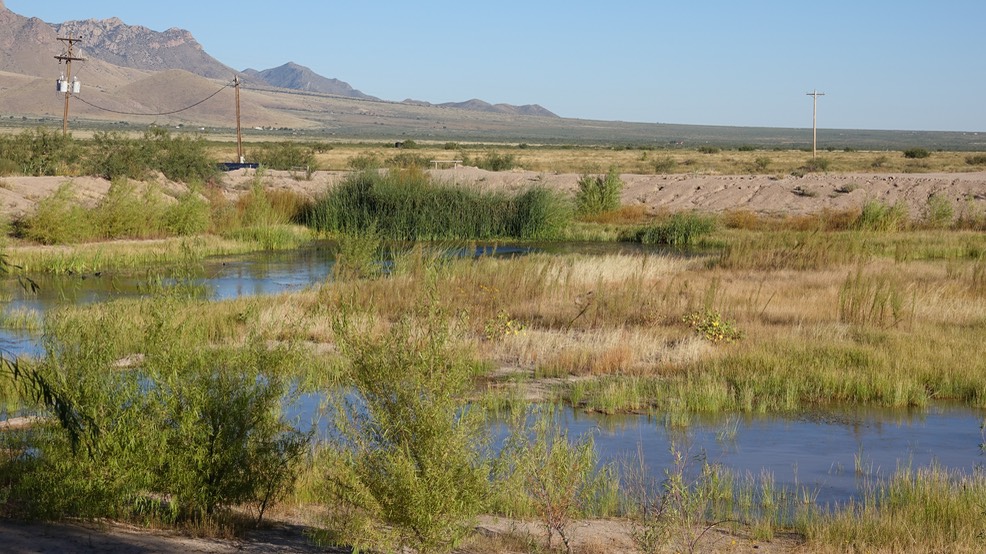
Sunday Morning we started the day at Willow Tank. After a short stop to remove a Desert Box Turtle (photo below) we then headed south to Douglas and up the west side of the Chiricahuas to Wilcox and then northwest through Mule Creek to Silver City and home.
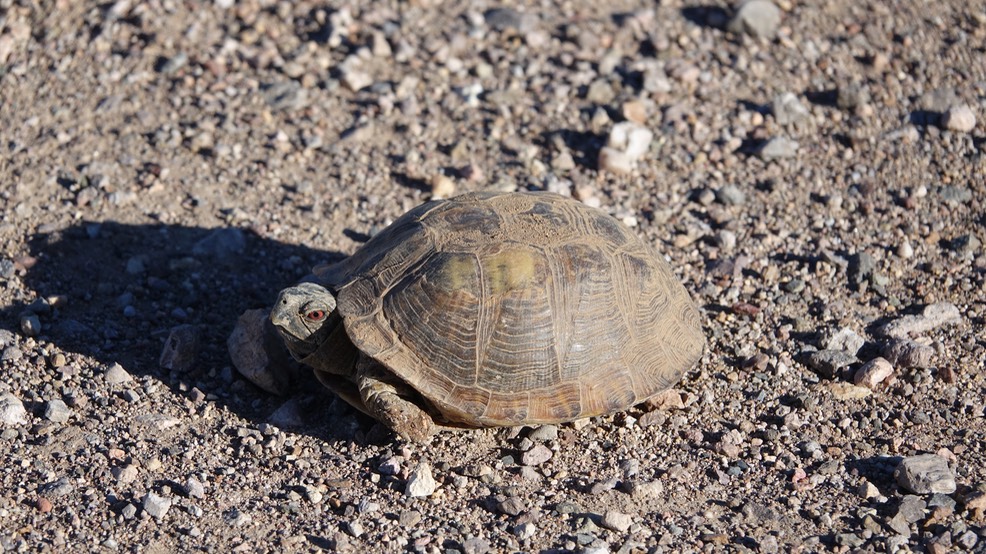
Video taken on this trip has been added to the following Video Portfolios: Blue-throated Hummingbird, Anna’s Hummingbird, Broad-tailed Hummingbird, Yellow-headed Blackbird, American Coot, and Brown-headed Cowbird, have been added to the Birds of the United States and Canada; video of Arizona Sister and Water Strider have been added to the Insects, Arthropods, and Other Critters of This Type; and Yarrow’s Spiny Lizard has been added to the Reptiles & Amphibians.
ANT SWARMS
While traveling down from the crest of the Chiricahua Mountains in Arizona my son and I came upon an ant swarm. They were all over the ground and rocks and filled the air. Birds were everywhere; Western Tanagers, Black-headed Grosbeaks, Steller’s Jays, and Chipping Sparrows predominated. They were having a feast.
In the middle of the feast, there was a great deal of mating going on. Death, feast, copulation, excitement, movement -- all captured in a circle 30 feet across. Everywhere you looked there were major events of life happening; tragedy, bliss, and gluttony all at once. It is something that I will not forget - in part, because my son and I shared the experience.